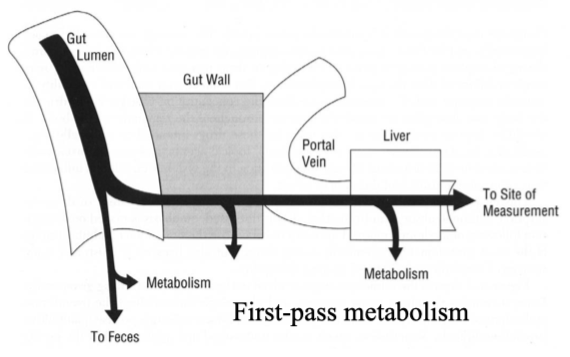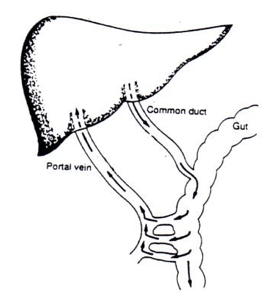The Absorption Concept
Under construction
The normal range for transit time includes the following:
- Gastric emptying (2–5 hours)
- Generally assumed as 2 hours.
- Highly diverse and primarily depend on whether the body is fed or fasted, and the size and density of the dosage form.
- Small intestine transit (2–6 hours)
- Relatively constant, not affected much.
- Colonic transit (10–59 hours)
- Influenced by a number of factors such as diet, stress, dietary fiber content and disease.
- Diarrhea increases colonic transit, constipation decreases it.
- Human activity can also affect dosage form motility in the colon, with the inactive state of sleep delaying the colonic transit.
- Whole gut transit (10–72 hours).
Drug absorption can be characterized by two pharmacokinetic parameters:
- Bioavailability (
The oral bioavailability (F) of a drug is determined by three factors:
where
- fa is the fraction of drug absorbed,
- fg is the fraction escaping gut-wall metabolism, and
- fh is the fraction escaping hepatic extraction.
See Equation 1 and Figure 1 for an illustration of these processes.
Enterohepatic recirculation
Figure 2 depicts enterohepatic recirculation, which can also influence bioavailability. If a drug exhibits enterohepatic recirculation, it is common to see two or more absorption “peaks”.

